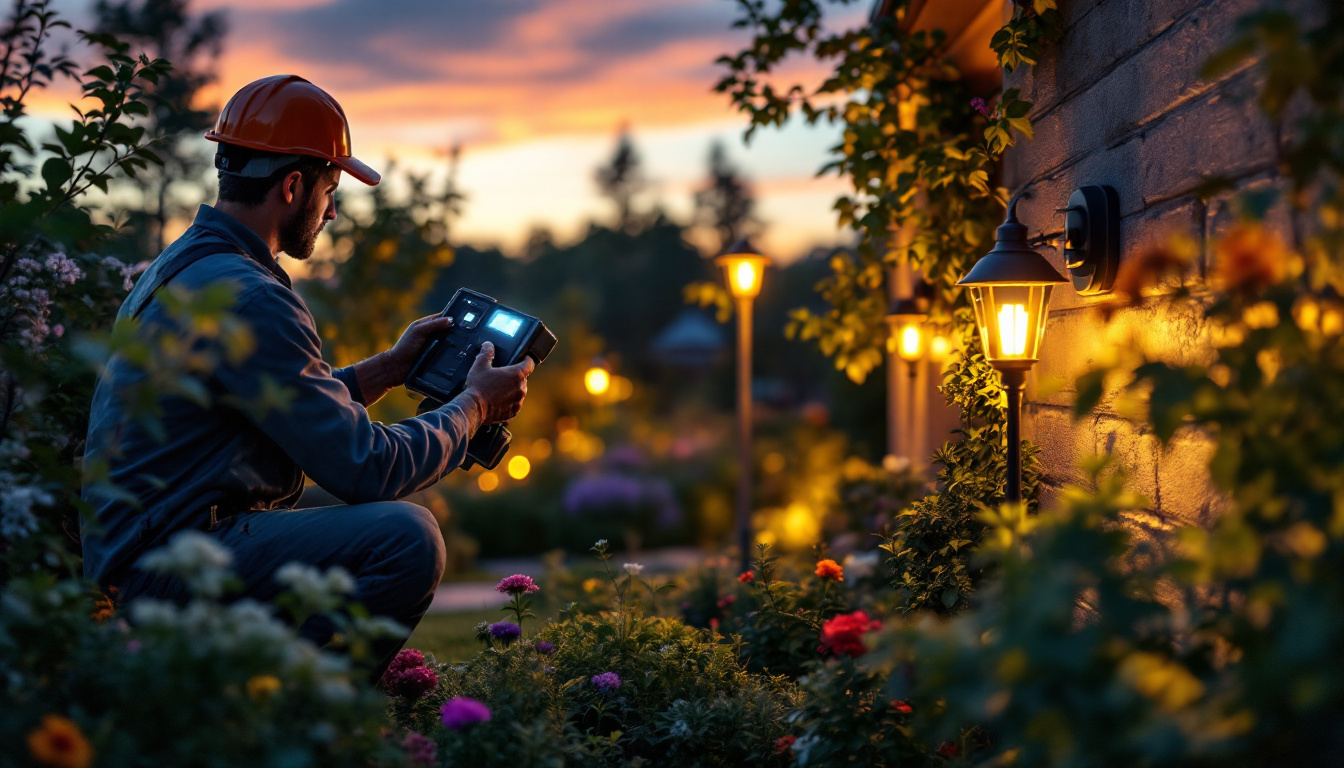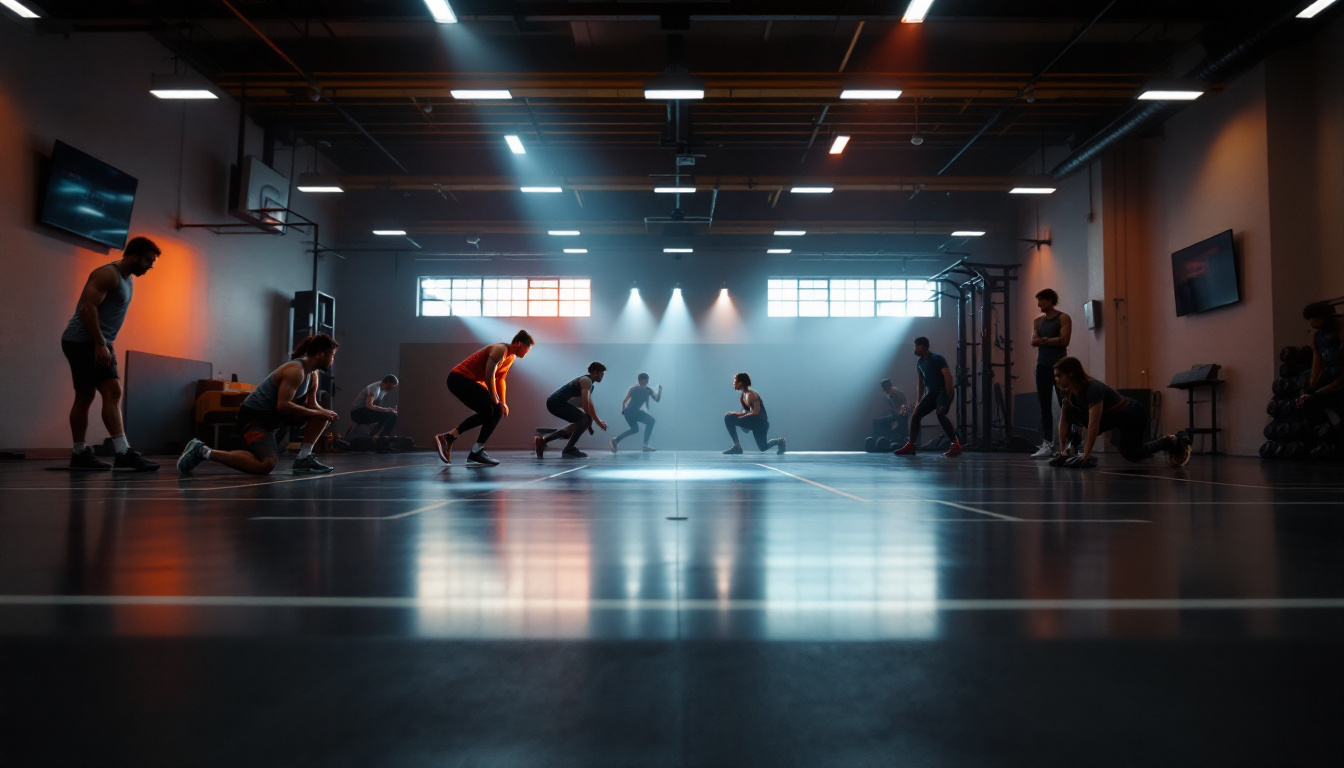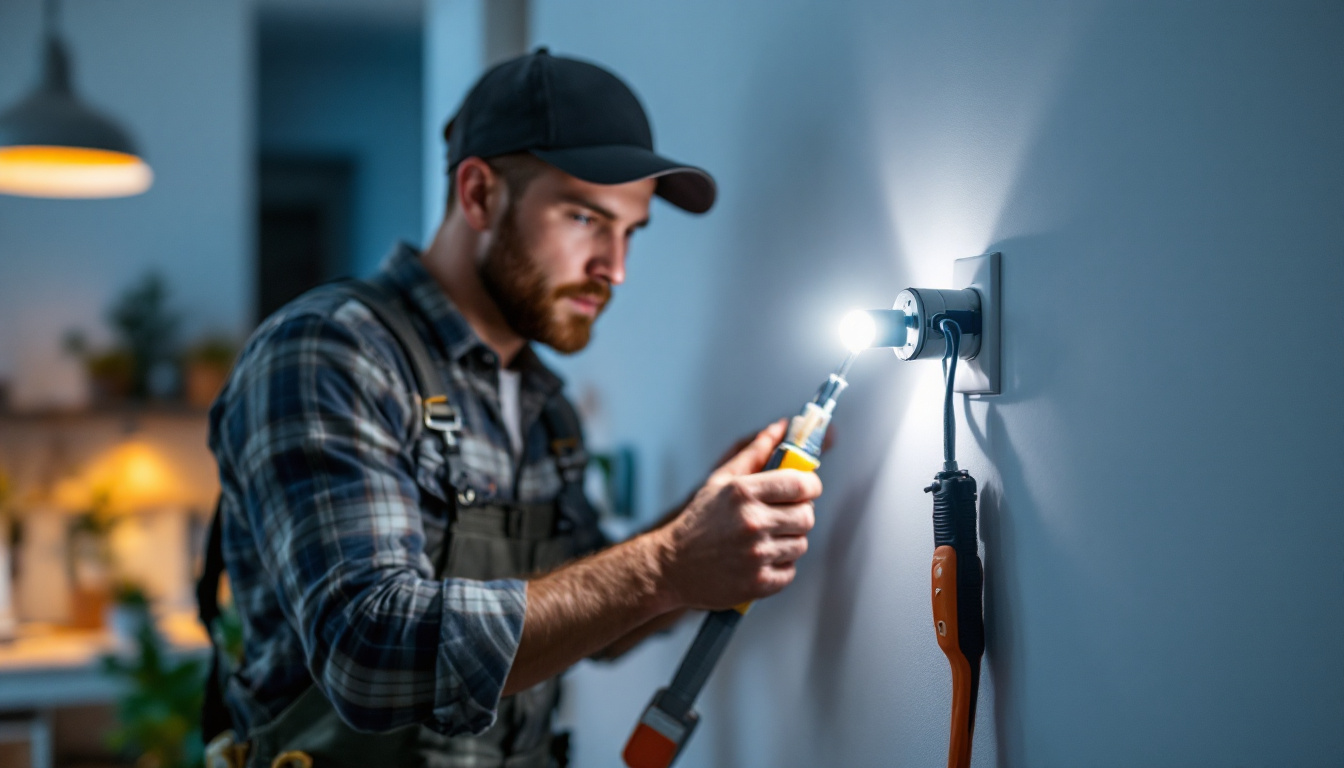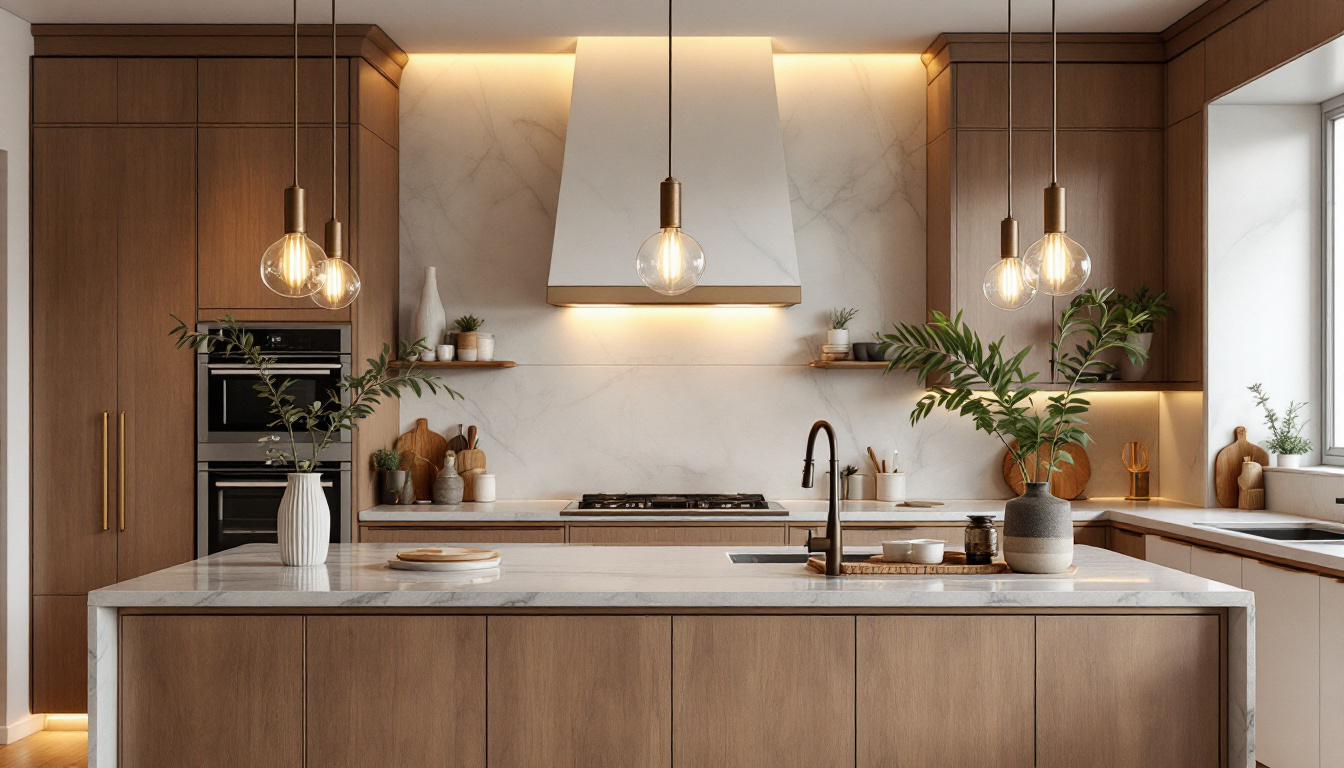
In the ever-evolving world of lighting design and installation, contractors face unique challenges and opportunities. The trend towards linear lighting solutions is gaining momentum, and understanding how to navigate this landscape can significantly impact a contractor’s success. This article provides valuable insights and practical advice tailored specifically for lighting contractors looking to enhance their expertise in linear lighting.
Linear lighting refers to a type of lighting fixture that is elongated and often used to create continuous lines of light. This design is not only aesthetically pleasing but also functional, making it a popular choice in various applications, from residential to commercial spaces.
Linear lighting can be integrated into ceilings, walls, and even floors, providing versatility in design. It can be used for ambient, task, or accent lighting, depending on the needs of the space. Understanding the different types of linear lighting fixtures, such as LED strips, recessed fixtures, and surface-mounted options, is essential for any lighting contractor. The choice of fixture can significantly impact the overall atmosphere of a room, influencing everything from mood to productivity.
One of the primary advantages of linear lighting is its ability to create a sense of continuity and flow within a space. This can enhance the overall aesthetic and improve the functionality of areas such as hallways, offices, and retail environments. The uninterrupted lines of light can guide the eye, making spaces feel larger and more cohesive, which is particularly beneficial in open-plan designs.
Moreover, linear lighting fixtures are often energy-efficient, especially when utilizing LED technology. This not only reduces energy costs but also appeals to environmentally conscious clients. Additionally, the sleek design of linear fixtures can complement modern architectural styles, making them a preferred choice among designers and architects. The longevity of LED options further contributes to their appeal, as they require less frequent replacement, thereby minimizing waste and maintenance efforts.
Linear lighting can be applied in various settings, each with its unique requirements. In residential spaces, it can illuminate kitchens, living rooms, and bathrooms, providing both functionality and ambiance. For instance, in kitchens, linear lighting can be strategically placed under cabinets to enhance workspace visibility, while in living rooms, it can create a warm, inviting atmosphere that encourages relaxation and social interaction. In commercial settings, linear lighting is often used in offices, retail spaces, and galleries to create an inviting atmosphere while ensuring adequate lighting for tasks.
Furthermore, linear lighting can be utilized in outdoor settings, enhancing landscapes, pathways, and architectural features. The ability to withstand various weather conditions makes linear fixtures ideal for illuminating outdoor spaces, providing safety and aesthetic appeal. Understanding these diverse applications allows contractors to offer tailored solutions that meet the specific needs of their clients. Additionally, the integration of smart technology with linear lighting systems can further enhance their functionality, allowing users to control brightness and color temperature to suit different occasions or moods, thus expanding their usability across various environments.
Selecting the appropriate linear lighting solutions involves several considerations, including the type of fixture, the light source, and the installation method. Each project may require a different approach, and being well-versed in these options is vital for contractors.
Linear fixtures come in various forms, including LED strips, linear pendants, and recessed fixtures. LED strips are highly versatile and can be cut to size, making them ideal for custom applications. On the other hand, linear pendants can serve as both functional and decorative elements in a space. Their design can range from minimalist to ornate, allowing them to complement various interior styles, from modern to industrial.
Recessed linear fixtures are often used in ceilings for a clean, unobtrusive look. Understanding the advantages and limitations of each type allows contractors to recommend the best solution for their clients’ needs. For instance, while recessed fixtures can create a seamless aesthetic, they may require more complex installation and maintenance compared to surface-mounted options. Additionally, the choice of fixture can influence the overall lighting design, with some fixtures offering adjustable features that allow for tailored light distribution, enhancing both functionality and ambiance.
The choice of light source significantly impacts the performance and quality of linear lighting. LED technology has become the preferred option due to its energy efficiency, longevity, and low heat output. However, contractors should also consider the color temperature and color rendering index (CRI) of the light source, as these factors influence the overall appearance of the space. A higher CRI means that colors will appear more vibrant and true to life, which is particularly important in settings like art galleries or retail spaces where color accuracy is paramount.
For example, warmer color temperatures may create a cozy atmosphere in residential settings, while cooler temperatures can enhance productivity in office environments. Furthermore, the integration of smart lighting solutions is becoming increasingly popular, allowing for dynamic adjustments in color temperature and intensity based on the time of day or specific tasks. Being knowledgeable about these aspects enables contractors to make informed recommendations that align with their clients’ preferences, ultimately leading to a more satisfying and effective lighting solution that meets both aesthetic and functional requirements.
Proper installation is crucial for the performance and longevity of linear lighting fixtures. Contractors should adhere to best practices to ensure that installations are not only aesthetically pleasing but also safe and effective.
Before installation, it is essential to plan the layout of the linear lighting. This involves considering the dimensions of the space, the placement of fixtures, and the desired lighting effect. Utilizing design software can help visualize the layout and make necessary adjustments before installation begins.
Additionally, contractors should account for the electrical requirements and ensure that the fixtures are compatible with existing systems. A well-thought-out layout can prevent issues during installation and enhance the overall effectiveness of the lighting design. It’s also beneficial to consider the color temperature of the lights, as this can dramatically influence the ambiance of the space. For instance, warmer tones can create a cozy atmosphere in residential settings, while cooler tones may be more suitable for commercial environments where focus and productivity are prioritized.
Wiring and connections are critical components of any lighting installation. Contractors must ensure that all electrical connections are secure and compliant with local codes. This not only ensures safety but also prevents potential issues such as flickering lights or fixture failure.
Using high-quality connectors and following manufacturer guidelines can significantly reduce the risk of electrical problems. Furthermore, it is advisable to test the fixtures before finalizing the installation to ensure everything functions as intended. In addition to these precautions, it’s important to consider the routing of wires to minimize visibility and maintain the aesthetic appeal of the installation. Concealing wires within walls or using cable management systems can provide a clean look while also protecting the wiring from potential damage. Moreover, implementing dimming options can enhance versatility, allowing users to adjust the lighting to suit various activities or moods throughout the day.
Once installed, linear lighting systems require regular maintenance to ensure optimal performance. Educating clients on maintenance practices can enhance their satisfaction and prolong the lifespan of the fixtures.
Dust and debris can accumulate on linear fixtures, affecting their performance and appearance. Regular cleaning is essential to maintain the quality of light output. Contractors should advise clients on appropriate cleaning methods and materials to avoid damaging the fixtures.
Additionally, periodic inspections can help identify potential issues before they become significant problems. Checking for loose connections, signs of wear, and overall functionality can prevent costly repairs down the line.
As technology advances, there may be opportunities to upgrade existing linear lighting systems. Contractors should stay informed about the latest innovations in lighting technology, such as smart lighting solutions that allow for enhanced control and energy efficiency.
Retrofitting older systems with modern fixtures or controls can provide clients with improved performance and energy savings. Offering these options can position contractors as knowledgeable professionals who prioritize their clients’ needs and preferences.
The lighting industry is constantly evolving, with new technologies and design trends emerging regularly. Staying informed about these changes is essential for contractors who wish to remain competitive and provide the best solutions for their clients.
Participating in workshops, webinars, and industry conferences can provide valuable insights into the latest trends and technologies in linear lighting. Many manufacturers also offer training programs that cover product specifications and installation techniques.
By investing in continuing education, contractors can enhance their skills and knowledge, enabling them to offer innovative solutions that meet the demands of modern lighting design.
Building relationships with other professionals in the lighting industry can lead to valuable partnerships and opportunities for collaboration. Networking with architects, designers, and suppliers can provide contractors with insights into upcoming projects and trends.
Joining industry associations and participating in local events can also help contractors stay connected and informed. These connections can lead to referrals and new business opportunities, further enhancing a contractor’s reputation and success.
Linear lighting presents a wealth of opportunities for lighting contractors willing to embrace its potential. By understanding the nuances of linear lighting, choosing the right solutions, adhering to best installation practices, and staying current with industry trends, contractors can position themselves as experts in the field.
Ultimately, the goal is to provide clients with high-quality lighting solutions that enhance their spaces while meeting their functional needs. By following the advice outlined in this article, lighting contractors can navigate the complexities of linear lighting and achieve lasting success in their projects.
Ready to take your linear lighting projects to the next level? At LumenWholesale, we provide lighting contractors with the highest quality, spec-grade lighting products at prices that can’t be beaten. Say goodbye to local distributor markups and hello to our extensive selection that meets rigorous industry standards. With free shipping on bulk orders, you can trust that you’re getting premium lighting solutions at the best value, without any hidden fees. Elevate your lighting installations with the perfect combination of quality, affordability, and convenience. Start browsing our collection now and discover the LumenWholesale difference at Wholesale Lighting at the Best Value.

Discover the essential guide for lighting contractors with our comprehensive handbook on outdoor light photo sensors.

Discover innovative strategies and cutting-edge technologies that smart lighting contractors use to transform gymnasium environments.

Discover expert insights and practical advice from lighting contractors on efficiently installing and managing wire light switch outlets.

Discover expert insights on selecting and installing kitchen island light fixtures tailored for lighting contractors.